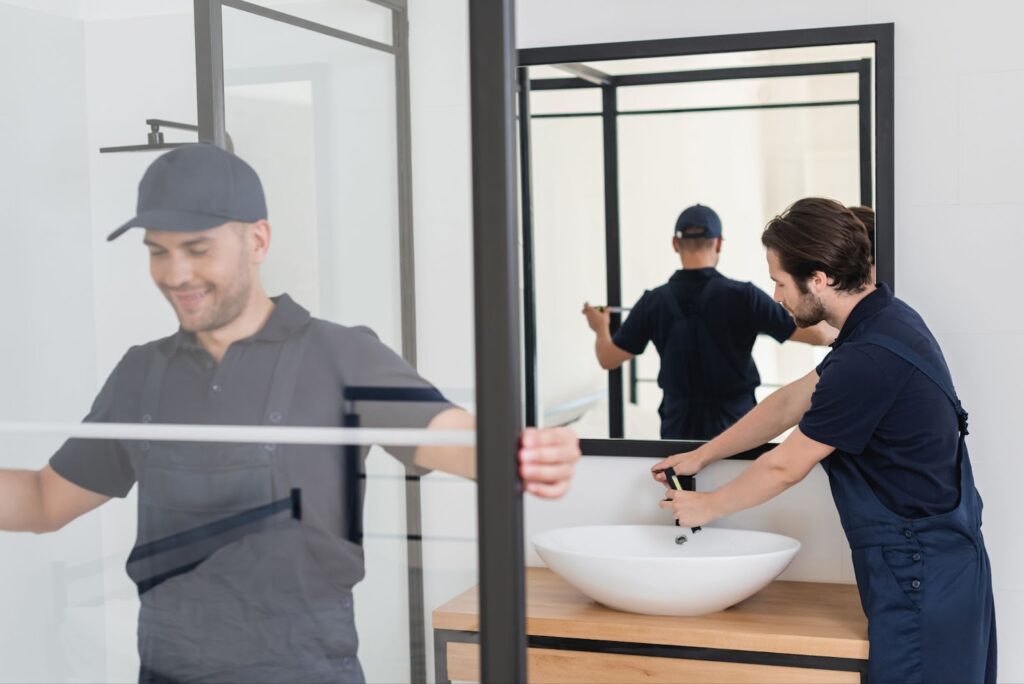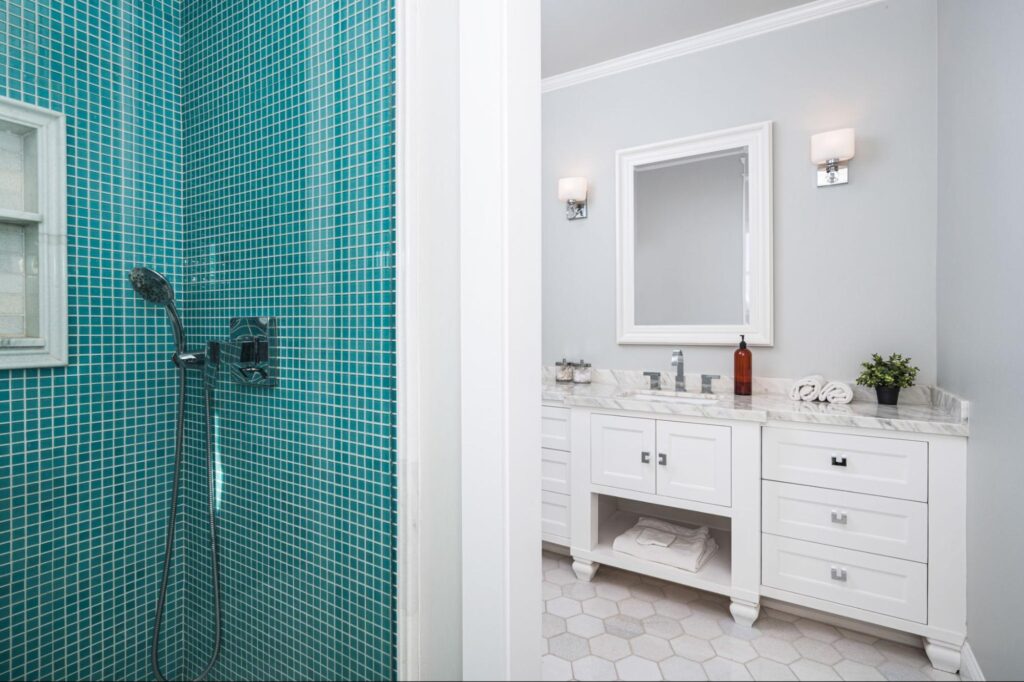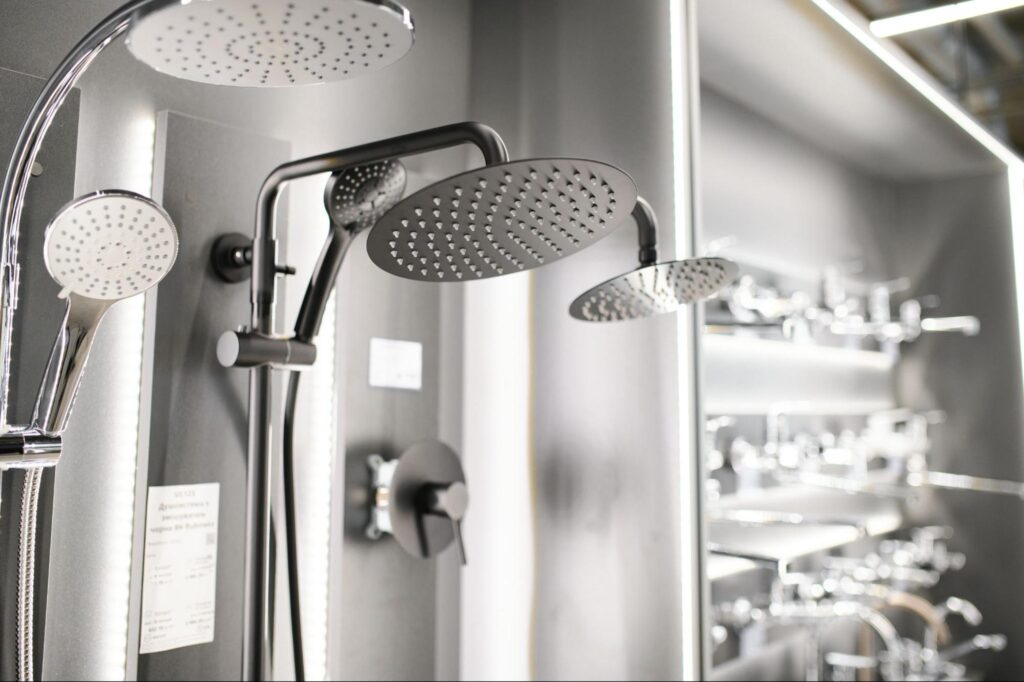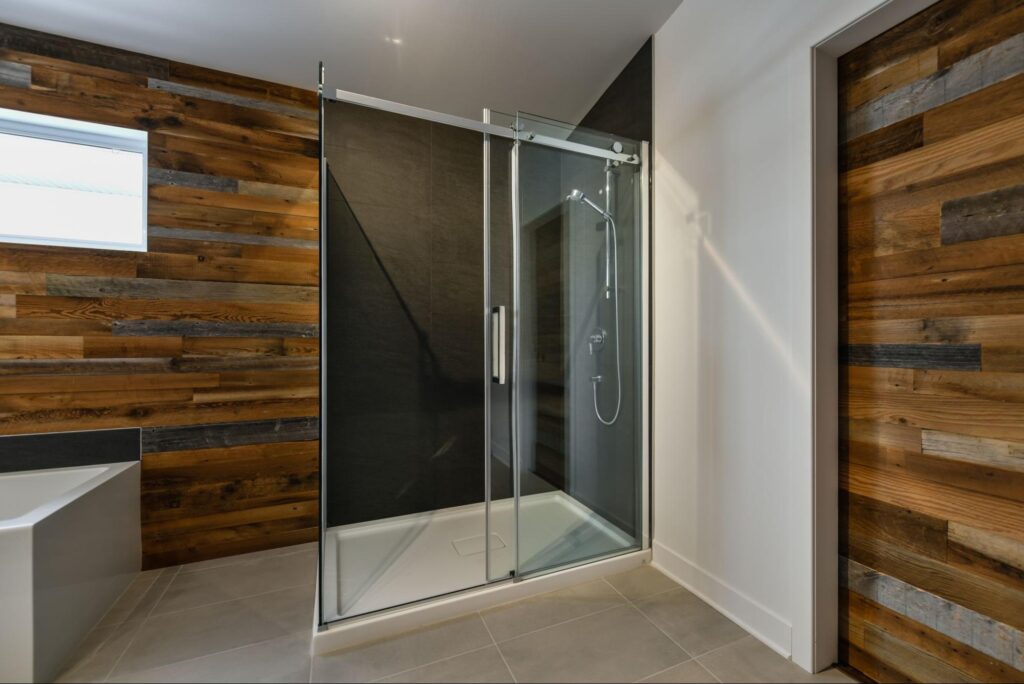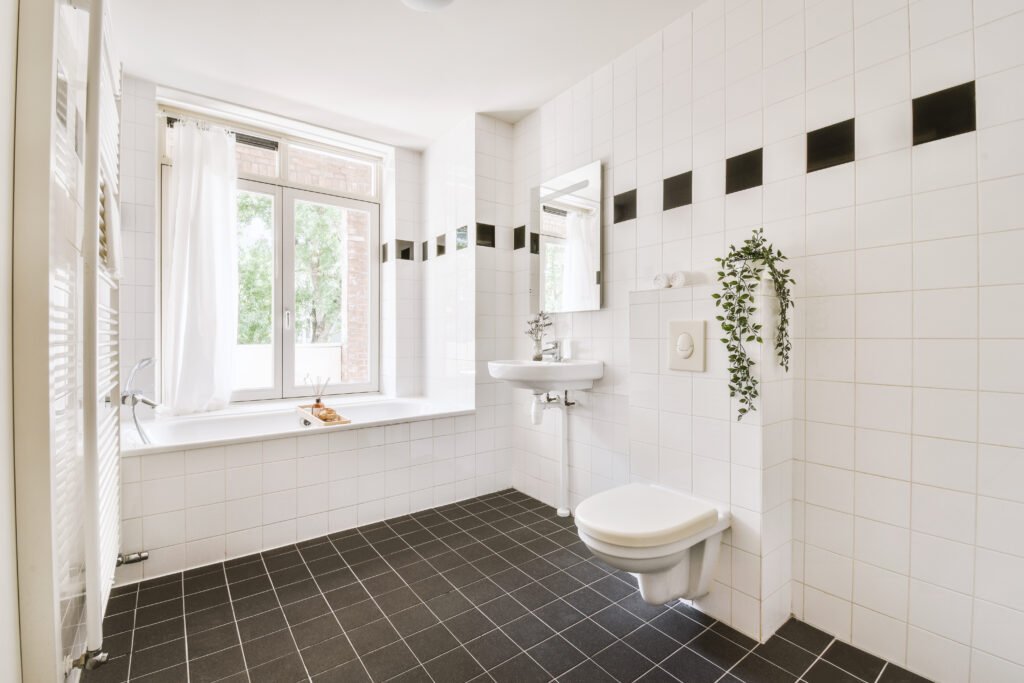Bathroom remodeling is a journey that transforms your space into a sanctuary of comfort and style. It’s not just about selecting tiles and fixtures but creating a cohesive design that reflects your aesthetic while enhancing functionality. Whether you’re a homeowner, property owner, or building or renovating a home, this guide aims to navigate you through the entire process, from initial planning to the final touches of execution.
Understanding the Scope of Your Bathroom Remodel
Before discussing the materials and labor details, it’s crucial to define the scope of your remodel. Are you considering a simple cosmetic update or a complete overhaul? This distinction will significantly influence your budget, timeline, and the professionals you might need to hire.
- Cosmetic Updates: These are surface-level changes such as painting, replacing fixtures, or updating hardware. Cosmetic updates can dramatically change the look of your bathroom without a hefty price tag.
- Partial Remodel: This might include replacing outdated fixtures, installing new tiles, or upgrading the vanity. A partial remodel can offer a balance between impact and investment.
- Total Remodel: A comprehensive overhaul involves reimagining the space entirely. That can include changing the layout, moving plumbing, and installing new fixtures and finishes. A complete remodel requires a more substantial budget and professional assistance.
How to Plan a Bathroom Renovation
Planning a bathroom renovation involves thoughtful steps, from conceptualizing the design to setting a budget and choosing suitable materials and professionals. Here’s a structured guide on how to plan your bathroom renovation effectively:
Assess Your Needs and Desires
Start by evaluating your current bathroom to determine what works, what doesn’t, and what changes are necessary to meet your needs. Consider factors like the size of the toilet, how it’s used, and who uses it. This step helps prioritize the elements you want to change or update.
Gather Inspiration
Look for inspiration in magazines, online platforms like Pinterest and Instagram, and design websites. This research can help you define your aesthetic preferences and functionality requirements. Create a mood board or a collection of images and ideas that resonate with your vision for the bathroom.
Set a Budget
Determine how much you’re willing to spend on the renovation. A clear budget guides your choices regarding materials, finishes, and the scope of work. Include a 10-20% buffer for unexpected expenses often arising during renovations.
Plan the Layout
Consider whether the existing layout meets your needs or requires adjustments. Moving plumbing and electrical fixtures can significantly increase the project cost. Sketch different layouts on graph paper or a digital tool to visualize the space.
Choose Your Style and Materials
Decide on a cohesive style that reflects your taste and complements the overall design of your home. Select materials and finishes for the flooring, walls, countertops, and fixtures, keeping durability and maintenance in mind. For example, porcelain tiles are famous for their resistance to moisture and wear.
Hire Professionals
For tasks beyond DIY, you’ll need to hire professionals. That may include a designer, contractor, plumber, and electrician. Get multiple quotes, check references, and review portfolios to ensure you choose the right team for your project.
Obtain Permits
Check with your local building department to determine if permits are required for your renovation. Structural changes, plumbing alterations, or electrical work are often necessary. Your contractor can typically handle this process for you.
Source Materials and Fixtures
Start purchasing the materials, fixtures, and fittings for your renovation. To avoid delays, it’s wise to have everything on hand before the work begins. Look for sales or consider reclaimed materials to save money.
Plan for Disruption
Bathroom renovations can disrupt daily life, especially in homes with only one bathroom. To minimize inconvenience, arrange alternative accommodations and establish a timeline with your contractor.
Oversee the Renovation
Stay engaged with the renovation process to ensure it aligns with your vision and budget. Communicate regularly with your contractor and make decisions promptly to keep the project moving smoothly.
Final Inspection and Touch-Ups
Once the main work is completed, scrutinize the renovation. Look for any issues or unfinished details and discuss these with your contractor. After any final adjustments or touch-ups, your new bathroom will be ready to enjoy.
Planning a bathroom renovation is a detailed process that requires time, research, and careful consideration. Following these steps, you can create a functional, stylish, personalized space that meets your needs and enhances your home’s value.
How Much Will A Bathroom Remodel Cost?
The cost of a bathroom remodel varies widely based on several factors, including the bathroom size, the remodel’s extent, the quality of materials chosen, and the labor costs in your area. Here’s a breakdown to give you a clearer understanding of potential costs:
Minor Bathroom Updates
For minor updates like painting, changing light fixtures, or updating faucets, you might spend a few hundred to a few thousand dollars. These cosmetic changes can refresh the look of your bathroom without a significant financial outlay.
Mid-Range Bathroom Remodels
A mid-range remodeling project typically involves several vital upgrades, such as replacing the toilet, sink, and fixtures and installing a new bathtub or shower. Flooring updates are also standard in this type of renovation. Additionally, adding new tiles can further enhance the aesthetic and functionality of the space. These improvements collectively contribute to refreshing and modernizing the area without overly straining the budget.
Depending on the finishes and fixtures you choose, costs can range from $5,000 to $15,000 for a project of this scope.
High-End Bathroom Remodels
These remodels often encompass significant alterations to the bathroom, including changing the layout and relocating plumbing to accommodate new configurations. These projects frequently entail the installation of custom cabinetry or high-end finishes to achieve a luxurious aesthetic. Furthermore, there may be considerations for expanding the size of the bathroom to accommodate additional features or to create a more spacious and indulgent environment. Such remodels aim to elevate the overall design and functionality of the space to a premium standard.
These extensive renovations can cost anywhere from $15,000 to $30,000 or more, especially if you opt for luxury fixtures, materials, and finishes.
Factors Affecting Cost
- Labor: Labor costs can account for a significant portion of your budget. Expect to pay more for skilled labor in areas with higher living costs.
- Materials: The quality of materials significantly impacts the overall cost. Luxury materials like marble or high-tech fixtures like smart showers will increase your budget.
- Size of the Bathroom: Larger bathrooms require more materials and potentially more labor hours, increasing the overall cost.
- Structural Changes: Any structural changes, such as moving walls or plumbing, will require professionals like plumbers and electricians, increasing the cost.
- Location: Your geographical location affects both labor and material costs. Urban areas typically have higher renovation costs than rural areas.
Planning for Additional Costs
It’s wise to allocate 10-20% of your budget for unforeseen expenses. Issues like water damage or outdated plumbing can be uncovered during renovations, requiring additional funds.
Here are a few ways to save:
Do Some Work Yourself
Simple tasks like painting or installing hardware can reduce labor costs if you’re comfortable with DIY projects.
Shop Around for Materials
Look for sales and consider alternative materials that mimic the look of more expensive options.
Reuse When Possible
If some fixtures or elements are in good condition, consider reusing them to save money.
While the cost of a bathroom remodel can vary widely, careful planning and budgeting can help you achieve the desired look without overspending. It’s essential to get detailed quotes from contractors and make decisions based on aesthetics and functionality to ensure your remodeled bathroom meets your needs and adds value to your home.
Maximizing Impact: A Comprehensive Approach to Bathroom Renovation
When planning a bathroom renovation, integrating sustainability and efficiency into your design benefits the environment and can lead to long-term cost savings.
Emphasize Sustainability and Efficiency
Opting for eco-friendly materials such as recycled glass tiles or reclaimed wood for vanities can add unique character and reduce environmental impact. Water-efficient fixtures, including low-flow toilets and showerheads, conserve valuable water resources while maintaining high performance. Additionally, embracing energy-efficient solutions, such as LED lighting and radiant floor heating, can significantly lower energy consumption and enhance the comfort of your space.
Incorporate Smart Technology
Incorporating smart technology into bathroom designs is becoming increasingly popular, offering convenience and luxury. Smart showers that allow temperature and flow adjustments with digital controls, high-tech toilets with features like bidet functions and self-cleaning technology, and smart mirrors equipped with LED lighting, touch controls, and internet connectivity can transform daily routines into experiences of comfort and efficiency.
Focus on Accessibility
Accessibility is crucial in modern bathroom design, ensuring the space is usable and comfortable for individuals of all mobility levels. Barrier-free walk-in showers cater to a broad range of users and contribute to a sleek, contemporary aesthetic. Installing stylish grab bars in strategic locations and opting for comfort-height toilets can enhance safety without compromising the bathroom’s visual appeal.
Plan for Ventilation and Lighting
Adequate ventilation and thoughtful lighting are essential components of a well-planned bathroom renovation. Adequate ventilation systems prevent mold and mildew growth, preserving air quality and the longevity of materials. Maximizing natural light through windows or skylights can make the bathroom more spacious and welcoming. At the same time, a combination of task, ambient, and accent lighting solutions can set the perfect mood and improve functionality.
Customize Storage Solutions
Custom storage solutions can significantly impact the efficiency and enjoyment of your newly renovated bathroom. Built-in shelving, niches, and vanities with ample storage options help maintain a clutter-free environment. Features like towel warmers add a touch of luxury and serve a practical purpose, ensuring warm, dry towels are always within reach.
Create a Detailed Timeline
Creating a detailed timeline for your renovation project, including buffer times for unforeseen delays, helps manage expectations and facilitates smoother project flow. Regular communication with your contractor through weekly meetings and keeping a detailed record of decisions and changes are vital practices for staying on top of the renovation process and addressing challenges promptly.
Decor and Final Touches
Finally, personalizing your bathroom with decor that reflects your style, from artwork to rugs and accessories, adds the finishing touches that make the space yours. Investing in quality organizers for cabinets and drawers further enhances the functionality of your bathroom, keeping it tidy and pleasant to use.
By carefully considering each aspect of your bathroom renovation plan, you can create a space that meets your aesthetic and functional needs. This thoughtful approach ensures that your new bathroom looks great and enhances your daily routine with improved efficiency and ease of use.
Visit our Bathrooms by Design, Inc. blog to learn more about professional remodeling services for your home today!

